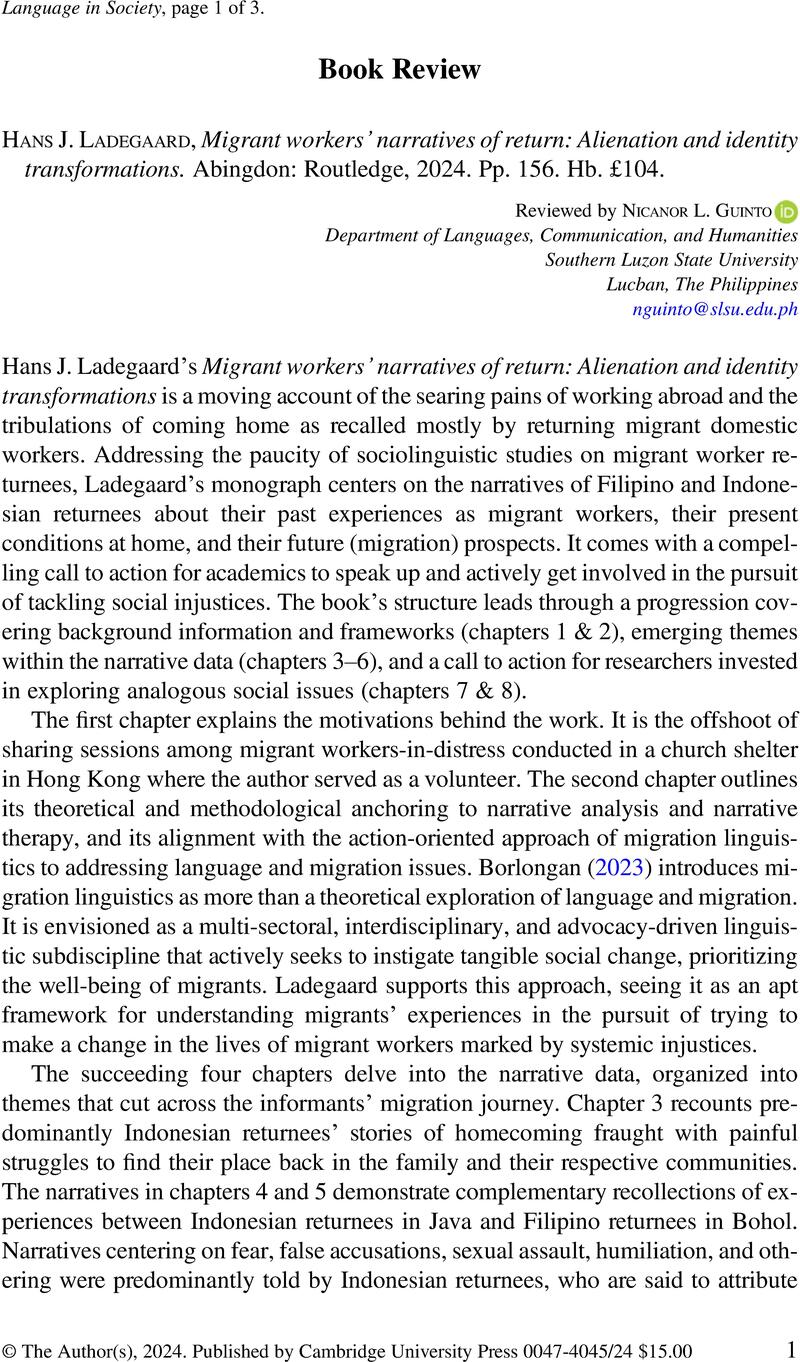No CrossRef data available.
Article contents
Hans J. Ladegaard, Migrant workers’ narratives of return: Alienation and identity transformations. Abingdon: Routledge, 2024. Pp. 156. Hb. £104.
Review products
Hans J. Ladegaard, Migrant workers’ narratives of return: Alienation and identity transformations. Abingdon: Routledge, 2024. Pp. 156. Hb. £104.
Published online by Cambridge University Press: 14 February 2024
Abstract
An abstract is not available for this content so a preview has been provided. Please use the Get access link above for information on how to access this content.

- Type
- Review
- Information
- Copyright
- Copyright © The Author(s), 2024. Published by Cambridge University Press
References
Borlongan, Ariane (2023). Migration linguistics: A synopsis. AILA Review 36(1):38–63. Online: https://doi.org/10.1075/aila.22014.bor.CrossRefGoogle Scholar



